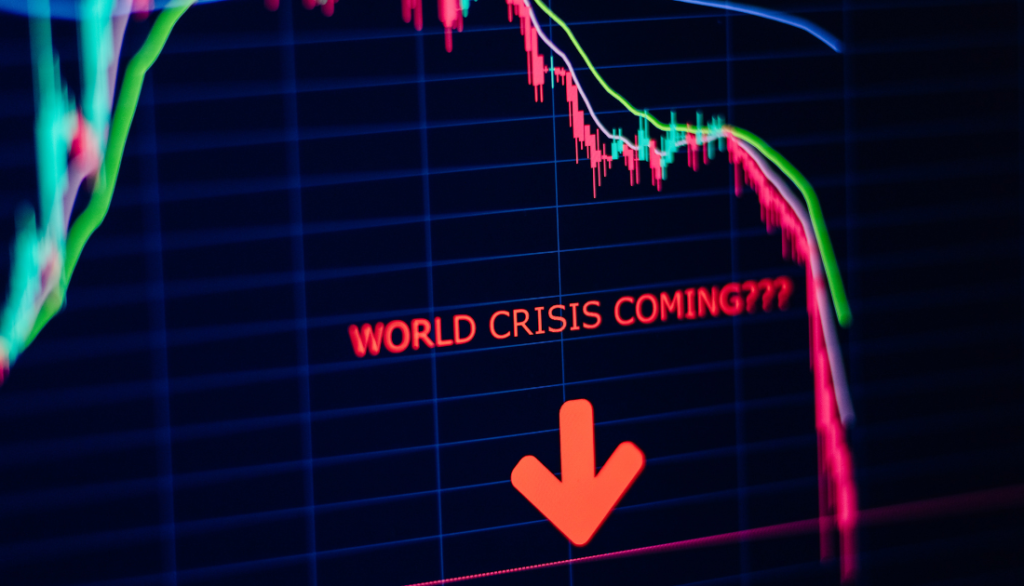The Indian stock market experienced a sharp downturn on Thursday as geopolitical tensions in the Middle East and new domestic regulations weighed heavily on investor sentiment.
The benchmark indices, Sensex and Nifty 50, opened over 1% lower, with the Sensex crashing by 1,264.20 points, or 1.50%, to open at 83,002.09, while the Nifty 50 fell 344.05 points, or 1.33%, to 25,452.85. This marks the fourth consecutive day of losses for the Nifty 50, which has dropped nearly 3% over this period.
Geopolitical Tensions Weigh on Market Sentiment
The ongoing conflict between Israel and Iran has escalated significantly, triggering panic among global investors. On October 1, Iran fired approximately 200 missiles into Israel in retaliation for the killing of Hezbollah’s leader, Hassan Nasrallah.
The subsequent response from Israel, which vowed to make Iran “pay” for the attack, has created fears of a full-blown regional war. Tehran’s warning of a larger strike if targeted has added further uncertainty to the situation, which is contributing to the sell-off in global markets, including India.
In the latest development, reports indicate that at least six people have been killed, and seven others were injured in an Israeli strike on a health center in central Beirut, according to The Guardian. This ongoing violence is making global investors increasingly risk-averse, triggering sell-offs across equity markets, particularly in regions heavily reliant on oil imports like India.
Crude Oil Prices Spike Amid Conflict Fears
The escalating Middle East conflict has also pushed crude oil prices higher, a trend that is especially troubling for oil-importing nations like India. Brent crude futures increased by 1.24%, reaching $74.82 per barrel, while U.S. West Texas Intermediate (WTI) crude rose 1.37% to $71.06 per barrel.
India, one of the largest importers of crude oil, is particularly vulnerable to fluctuations in global oil prices. Any further escalation in the conflict could lead to a disruption in oil supplies, pushing prices even higher and adding to inflationary pressures in the Indian economy. Higher crude prices directly impact India’s import bill, further straining its fiscal balance and worsening the economic outlook.
Sectoral Indices Face Heavy Losses
Nearly all sectoral indices traded in the red, with the Nifty Metal index being the only outlier to post gains. The Nifty Auto, Nifty FMCG, Nifty Realty, and Nifty Private Bank indices were among the biggest losers. The Nifty Midcap 100 and Nifty Smallcap 100 also registered steep declines, reflecting widespread selling across the board.
The market capitalisation of all listed companies on the Bombay Stock Exchange (BSE) fell by more than ₹5.5 lakh crore, bringing the total market cap to approximately ₹469 lakh crore. This massive sell-off eroded investor wealth, leaving retail and institutional investors alike grappling with the volatility.
New SEBI Rules Add Pressure
Adding to the market’s woes are new guidelines issued by the Securities and Exchange Board of India (SEBI) for derivatives trading. The regulator has tightened the rules, raising the minimum entry barriers for trading and reducing the number of weekly options contracts available for trading. These changes are designed to increase market transparency and reduce speculative trading, but they have also introduced new challenges for traders and investors.
SEBI’s new norms have raised the minimum trading amount nearly threefold, a move that could deter smaller traders from participating in the market. Puneet Sharma, CEO and Fund Manager at Whitespace Alpha, noted that while these changes are intended to enhance market resilience, they may inadvertently stifle innovation and reduce market participation.
“Stricter norms around leverage, transparency, and capital adequacy could limit the ability of investors to determine their own risk appetite, thereby stifling innovation in trading strategies,” said Sharma. “Over-regulation in an environment that thrives on strategic flexibility could dampen the market’s dynamism.”
The introduction of these tighter regulations comes at a time when market sentiment is already fragile, further exacerbating the sell-off.
Foreign Investor Selling Adds to the Slump
Foreign Institutional Investors (FIIs) have been heavy sellers in the Indian market over the past week. On October 1 alone, FIIs sold equities worth ₹5,579.35 crore. This marks the third consecutive day of net selling by FIIs, while Domestic Institutional Investors (DIIs) have continued their buying spree, purchasing equities worth ₹4,609.55 crore.
V K Vijayakumar, Chief Investment Strategist at Geojit Financial Services, believes that FIIs may continue to offload Indian equities in favor of cheaper markets like China and Hong Kong, where valuations are more attractive. Chinese stocks have shown bullish signs, drawing attention away from India, which currently faces high valuations and economic uncertainty.
Technical Breakdown Signals Further Downside
On the technical front, the Nifty 50 has broken key support levels at 25,700 and 25,500, signaling a potential for further downside. Derivatives analyst Hardik Matalia from Choice Broking noted that a break below these levels could trigger additional selling, possibly driving the index down by another 300 to 500 points.
“Traders with long positions are advised to book profits near resistance zones and wait for dips to re-enter buying positions,” said Matalia.
While some analysts believe that the current downturn offers a buying opportunity for long-term investors, the immediate outlook remains bleak, with geopolitical risks and domestic regulatory challenges casting a shadow over the market.
The combination of geopolitical tensions, rising oil prices, new SEBI regulations, and FII selling has led to a perfect storm for the Indian stock market. Investors will need to tread carefully in the days ahead as these factors continue to play out on the global and domestic stage.

